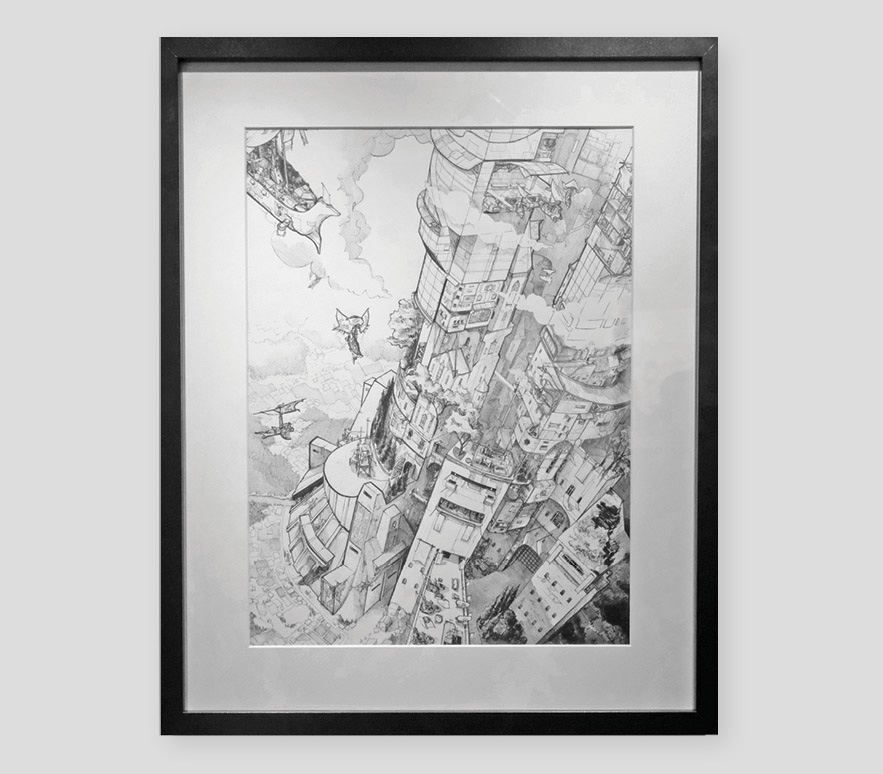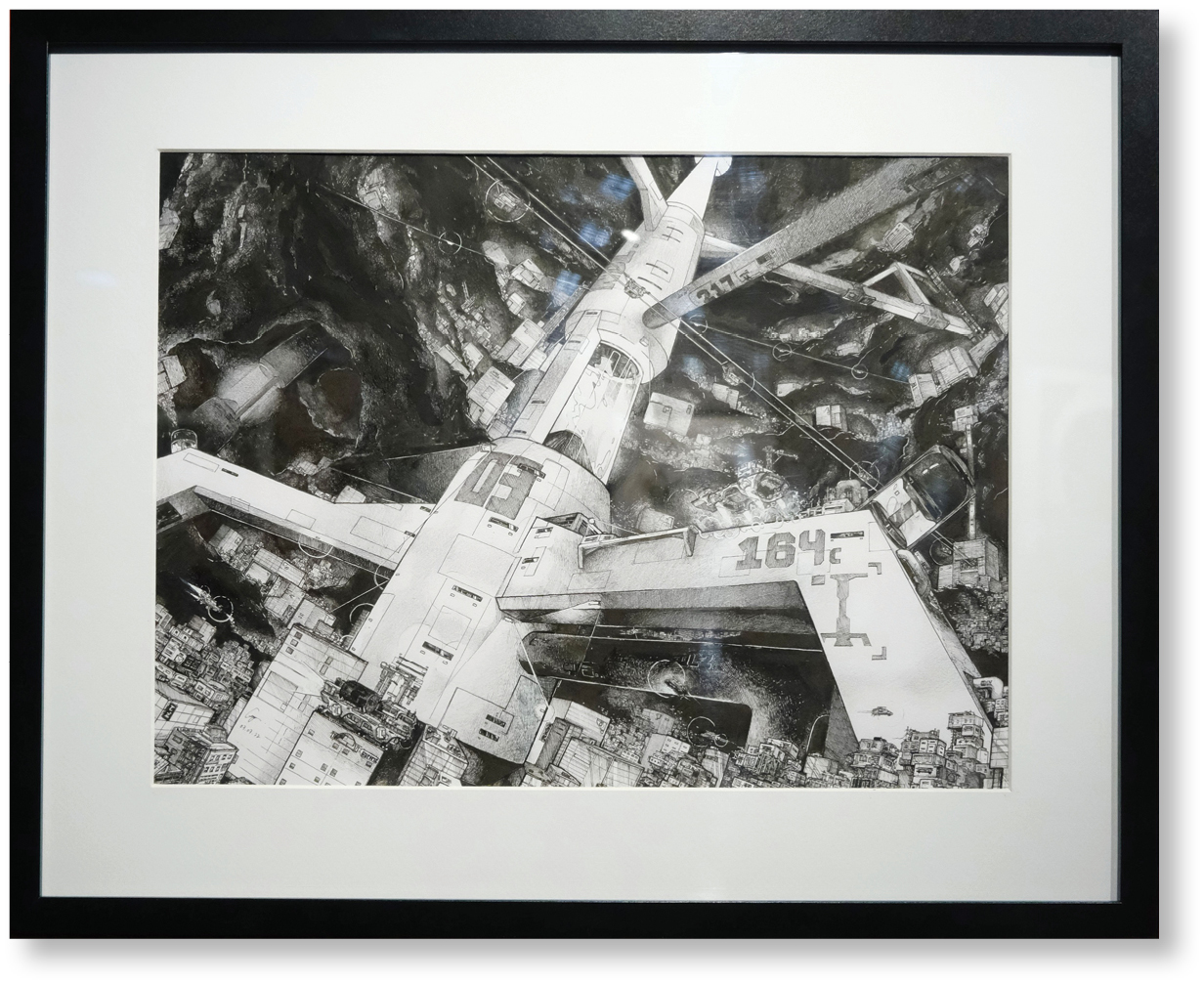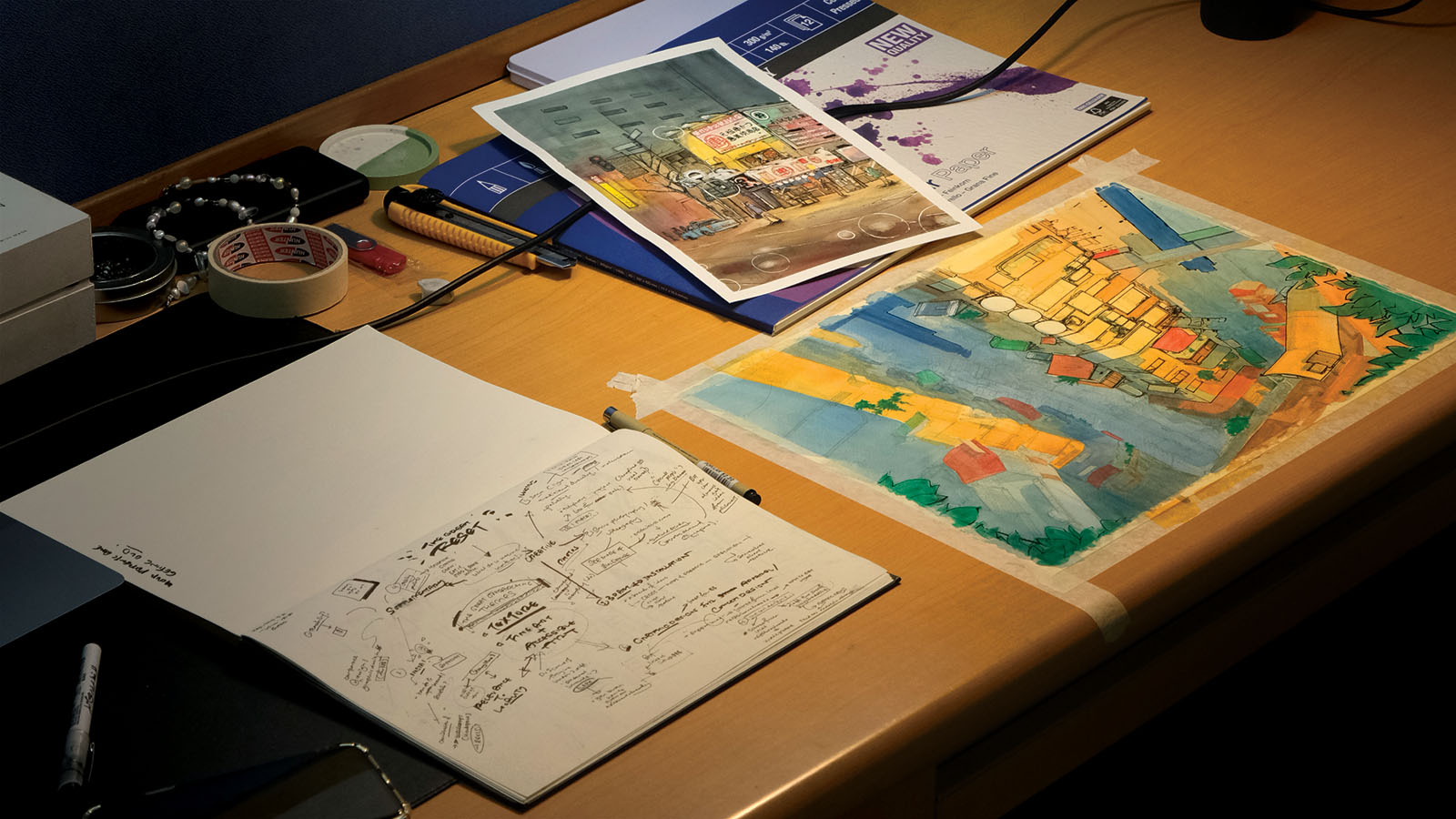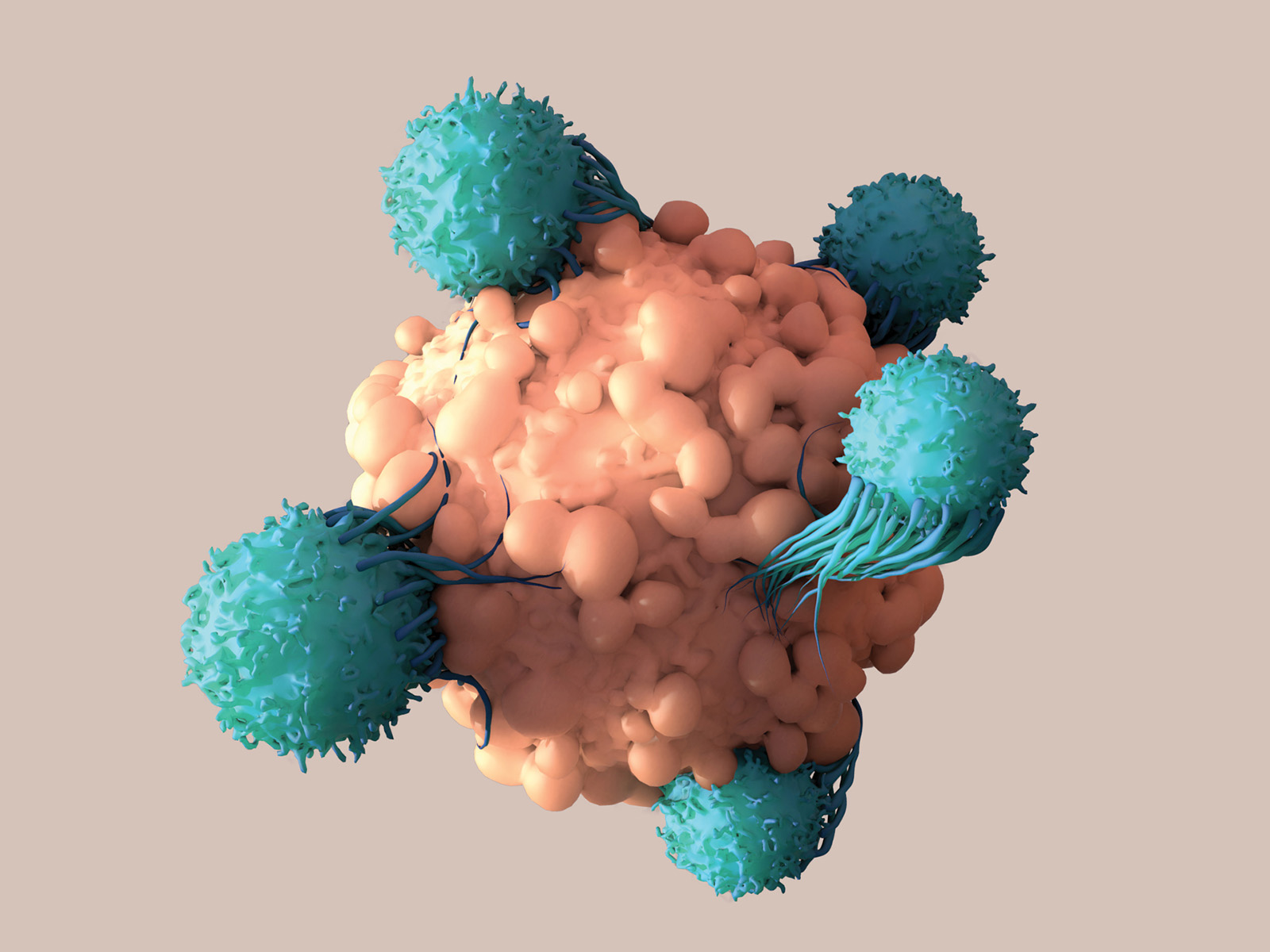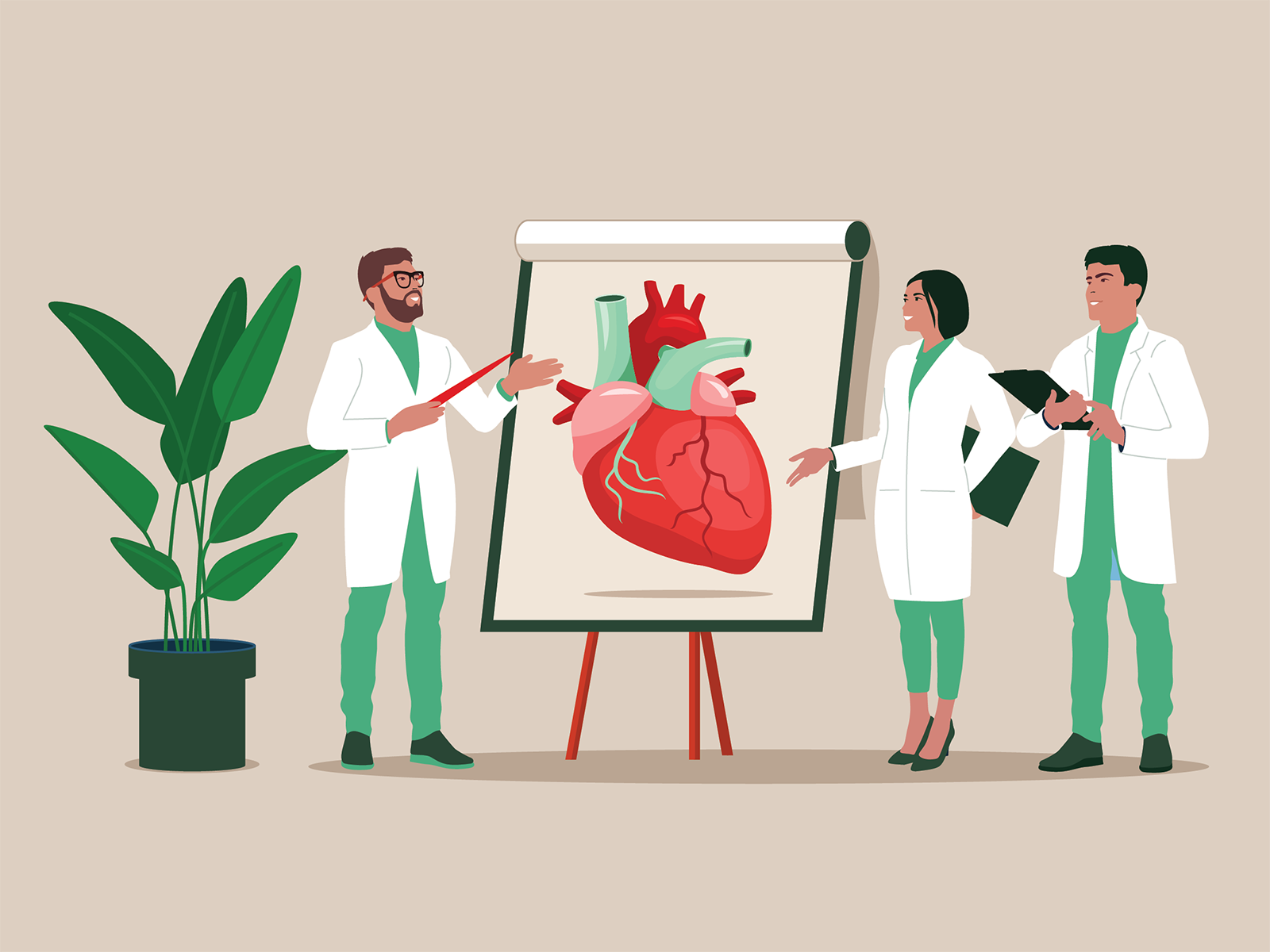I was never really very good at talking or being interpersonal. So I thought, you know what, being a doctor kind of forces you to apply that science in a way where you have to talk to different people and hold a lot of sometimes very difficult conversations. And being a doctor was something that I could constantly see being meaningful in some way, and being very constructive to other people’s lives.
The impact for something like architecture or teaching is a bit more indirect or delayed. For me, I need that direct impact to stay motivated, which is why, in the end, I chose medicine.
Q: How has art helped you become a better student of medicine?
A: Drawing has made me quite a detail-oriented person, which I guess does help, because a lot of learning in medicine comes from self-learning. Sometimes when I draw, I have to think of very small details, like all the textures of the buildings. So I guess that has somehow maybe trained me a little bit to always ask: “Is there something else going on here? Let me go and find out and Google a bit about this.”
Q: Do you have a favourite piece?
A: I always come back to “Burrow”. I didn’t expect to love it that much. I wanted to make a very grim image. I think I was feeling a bit edgy at that point because it started with, I want to do something about climate again. I don’t know why, but I just keep going back to climate-related works.
And I think a lot of climate stuff was happening in the news also. It began as a very black piece also, because a bunch of my previous works are bright like “Babel”. I didn’t really use the blacks a lot, so I was like, okay, this is a good learning opportunity.
And I think a lot of climate stuff was happening in the news also. It began as a very black piece also, because a bunch of my previous works are bright like “Babel”. I didn’t really use the blacks a lot, so I was like, okay, this is a good learning opportunity.
Yiming’s workspace, where he sketches and creates, in his room in Sheares Hall, NUS. Photograph by Yiming @yimingmade.
I wanted to express the meaning that right now humanity is stuck in this downward spiral of fossil fuels. And now, arguably, maybe we can still get out of it. But I wanted to depict a world where there is literally no way that we can get out of.
And then I thought about how I was going to express it aesthetically. So the idea of digging deeper underground and forcing everyone to live underground because the surface level was too hot. And then the story kind of built itself from there.
Q: You’re working on something called “Vital Signs”, and the process behind it is different from “Burrow” and “Babel”. Walk us through it!
A: I was very interested in the Shibuya crossing and the streets of Tokyo where there are advertisements everywhere. I wanted to include Singapore and a lot of Southeast Asian countries, but do it in like, a San Francisco style.
The work is called “Vital Signs”, because I became very interested in different sign boards that we use in Singapore, from historical to more modern ones.
There’s always some element of inequality and class in my work. So, from bottom to top, it’s like a kind of class difference. At the bottom are the wet markets, the hawker centres, the streets that I grew up in, a lot of those small neighbourhood shophouses, HDBs. And slowly we get up to the malls, the older malls, the newer malls, and finally the CBD.
I wanted to show how different the signages are at these different levels of SES (socioeconomic status).
Q: Congrats man—you’ve gone viral with reels racking up over a million views! With more than 100k pairs of eyes scrutinising your works, are there any added pressure?
A: I think having that amount of attention is, I guess, some pressure—pressure in a good way because I think it keeps me disciplined in creating content.
Content creation is quite a good start for student artists, like, very young artists who don’t really know where to start. A lot of good has come out of people from Singapore noticing what I do just because I put it on Instagram. Honestly, I should have started earlier. A good piece of advice for maybe my juniors from the Art Elective Programme (AEP), who want to pursue art as a side hustle, is to really just get on social media. I have no words for how transformative this has been.
There’s a very good quote from this random YouTuber: “When you have one follower create like you have one million, and when you have one million, create as if you have one.”
Click here to hear from Yiming on how he balances his demanding schedule as a medical student with his artistic pursuits.
This article was first published on Wonderwall.sg
